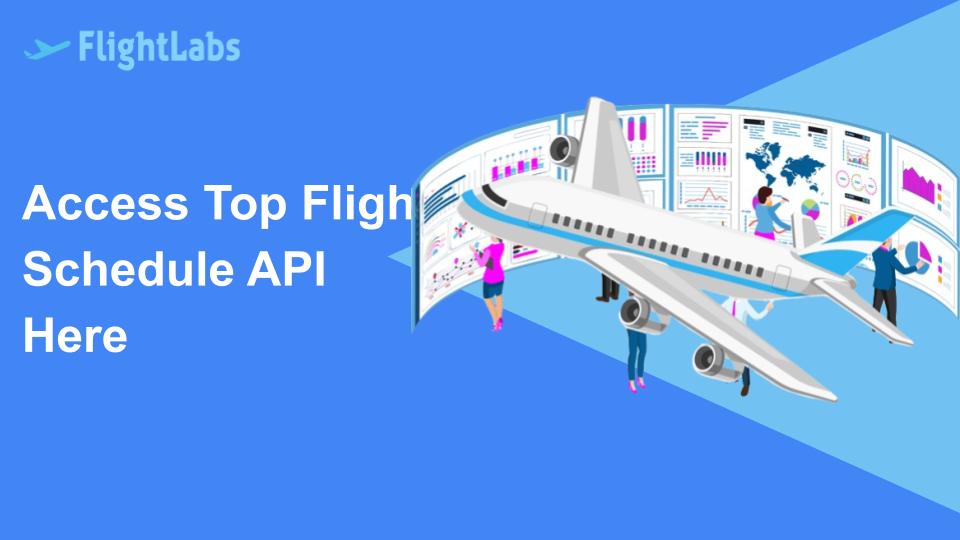Access Top Flight Schedule API Here

In today's fast-paced world of air travel, accessing reliable and up-to-date flight schedule information is crucial for travelers, airlines, and travel service providers. Fortunately, top In today's fast-paced world of air travel, accessing reliable and up-to-date flight schedule information is crucial for travelers, airlines, and travel service providers.offer a wealth of features and functionalities to meet these needs.
Importance Of Flight Schedule APIs:
Flight Schedule APIs play a pivotal role in the aviation industry by providing access to real-time flight schedule data. This data includes departure and arrival times, flight numbers, airlines, aircraft types, gate information, delays, cancellations, and more. Accessing this information allows users to plan and manage their travel itineraries effectively.
Choosing the Right Flight Schedule API: FlightLabs
Before accessing a FlightLabs, it's essential to choose the right one that meets your specific needs. Consider factors such as data accuracy, reliability, coverage (domestic and international flights), real-time updates, pricing, integration capabilities, and developer support. Look for APIs offered by reputable providers with a track record of delivering quality services.

Registration and API Key Acquisition:
Once you've selected a top FlightLabs, register for an account on the provider's website and obtain an API key or access credentials. This key is necessary for authenticating your API requests and gaining access to the API's functionalities. Follow the provider's documentation or guidelines for registration and key acquisition.
Understanding API Endpoints and Parameters:
Familiarize yourself with FlightLabs endpoints and parameters, which are URLs and variables that define specific functionalities or data retrieval options within the API. Common endpoints may include endpoints for retrieving flight schedules, searching for flights by route or airline, accessing airport information, and more. Understand how to structure your API requests with the appropriate parameters to retrieve relevant data.
Authentication and Authorization:
Before making FlightLabs requests, ensure that you authenticate and authorize your requests using the API key or access token provided during registration. Include these authentication credentials in your API requests' headers or parameters to validate your identity and gain access to the API's resources securely.
Making API Requests:
Once authenticated, you can start making FlightLabs requests to access flight schedule data. Use the designated endpoints and parameters to specify your search criteria, such as departure and arrival airports, dates, airlines, flight numbers, and more. Send your API requests using HTTP methods like GET or POST to retrieve the desired information.
Handling API Responses:
The FlightLabs will respond to your requests with JSON or XML data containing flight schedule information. Handle these API responses in your application code by parsing the data and extracting relevant details, such as departure times, arrival times, flight numbers, and other schedule-related information.

Integrating API Data into Applications:
Integrate the retrieved FlightLabs into your applications' user interface to provide users with access to real-time flight information. Design user-friendly interfaces that display flight schedules clearly and allow users to search, filter, and manage their travel itineraries seamlessly. Implement features such as real-time updates, notifications, and interactive maps for enhanced user experience.
Conclusion:
Accessing top FlightLabs is a strategic move for individuals and businesses involved in air travel. By choosing the right API, registering, obtaining an API key, understanding endpoints and parameters, authenticating requests, making API requests, handling responses, and integrating API data into applications effectively, users can access real-time flight schedule information and streamline flight scheduling and management processes.